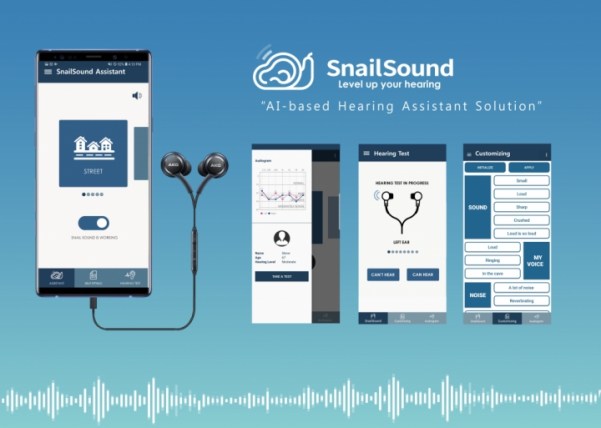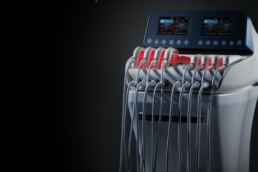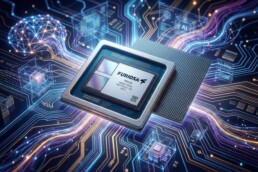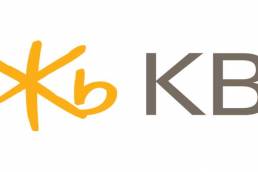South Korea has spent a lot of time on research and development. The Korean government encourages companies to push the limits. The reason was to make itself the leader in technological innovations. Top corporations like Korea are constantly looking for new products and technologies thanks to their investment in R&D. Innovative startups in Korea are also taking risks and coming up with new ideas they can test in the Korean market before taking it global. In addition, Korean technologies have attributed to South Korea being at the top of Bloomberg’s Innovation Index over the last 7 years.
R&D Leads to Korean Technologies
South Korea puts a lot into its R&D. Not only do major conglomerates like Samsung and LG invest in R&D, but startups do as well. AI, Biotech, and cybersecurity startups have been aggressively doing R&D thanks to government support for new technologies. Moreover, the South Korean government’s funding and support have been critical in helping to create an innovative ecosystem that encourages new products and services. In addition, the South Korean government has helped with international R&D collaboration around future technologies such as autonomous driving, 5G in South Korea, and semiconductor materials/equipment.
So what new technologies will drive South Korean businesses? These are the top 10 Korean technologies that have been commercialized globally or have the potential to be in the future. The rankings are in no particular order.
Top 10 Korean Technologies
1. The “Rollable” TV
LG is at the forefront of new technologies regarding flatscreen TVs. Their “rollable” TV screen can roll up, allowing it to fit inside the rectangular speaker. The TV screen is flexible and can be rolled up with a button. To create this, LG created an ultra-thin rollable OLED display and technologies to enhance the quality of the images and the sound. In addition, the “rollable” TV can be partially shown to show the time, dashboard, etc. It can do 50,000 rolls and unrolls, which equals 4 times daily for the next 32 years. In addition, it is extremely quiet as it rolls in and out of the speaker.
2. Samsung Smart Trainer

This is not a stand-alone product. The Samsung Smart Trainer is a feature of the Samsung TV. It is an innovative smart trainer that lets users use their living room as a gym and the TV as a personal trainer. Sensors will track and analyze your posture in real-time, count reps, help you with your form, and coach you on how to get the best workout possible. In addition, users can sync the Samsung Health app to see how many calories they’ve burned, how many steps they have taken, and more.
3. Micro LED TVs
Samsung’s newest technology is the Micro LED TV. It is 75 inches long and uses smaller LED ships which helps it pump out denser pixels. In addition, it can be customized in various sizes to fit into various spaces. It required millions of built-in chips to get 4K resolution onto their Micro LEDs. MicroLED sets are similar to OLEDs in their self-emissive properties, but instead of using organic light-emitting diodes, they use tiny, non-organic LEDs (3 per pixel). Therefore each pixel can be turned on or off individually. This means Micro LED TVs offer perfect contrast and color control. In addition, Micro LEDs can keep running non-stop for 100,000 hours which is just over 11 years.
4. Kevlar Textile Coating Technology

Created by UNIST (Ulsan National Institute of Science and Technology). This Kevlar textile coating method technology increases performance. This is easily in the top 10 Korean technologies because of its potential to save lives. They apply zinc oxide to the Kevlar fiber. This increases the shock absorption factor by 60%. Kevlar is a synthetic fiber known for its high strength. Most know that Kevlar is already pretty strong. The coat that is applied to the Kevlar is easy to apply.
The possible uses for this product would not just be for police vests. It can create stronger bicycle/car tires and racing sails. Smartphone companies inquired about this technology due to its high tensile strength-to-weight ratio. In addition, Kevlar is five times stronger than steel. Most Kevlar-producing companies want to onboard this new technology; if it is proven successful, others should follow.
5. Walking Car Technology

Hyundai Motor created the first ultimate mobility vehicle (UMV), ELEVATE. It combines robotic technology with electric cars. It can travel through various terrains, including stairs (up to 5 feet high), and can be vital for search and rescue operations. Furthermore, it can allow for easier transportation of those with disabilities and the elderly with their 4-sided vehicle access. These UMVs will have a modular EV platform that allows the capability to switch out different bodies for specific situations. In addition, the legs can also fold up into a stowed drive mode, where the power to the joints is cut, and using an integrated passive suspension system maximizes battery efficiency. Therefore, they can drive at highway speeds like any other vehicle.
6. Medical Robotics Technology
KIMM (Korea Institute of Machinery and Materials) has created a “Caregiver Robot” that could be used for future patients. These robots will support a patient’s recovery and rehabilitation by helping a patient’s upper and lower bodies. The robots will not require a controller and will work automatically. These “Caregiver Robots” will be in high demand in Korea in 2020.
Currently, in Korea, there is a shortage of nurses and caregivers. Therefore, as human labor decreases, fewer people enter the nursing sector. We will need to provide another solution. In the future, robot caregivers will become much more advanced. For now, this robot can be a start where we can build on the existing technology. The benefits of these robots will be great. Moreover, since robots do not need to sleep, they will always be available to support patients. This would have been something that would be too costly and ineffective with humans.
7. 3D Screen Monitors
 Korean startup MOPIC has created a monitor that offers 3D without needing 3D glasses. They developed a program for the monitor screen itself. The technology enables the camera in front of the device to track what viewers watch and adjust all the pixels (from the monitor) to reach their eyes accurately. Their Snap3D is a 3D/VR viewer. It is in the form of a smartphone case. Furthermore, with the introduction of high-speed and massive data wireless technology transferring 5G technology, the MOPIC Snap3D will have access to high-quality stereoscopic videos and AR content anywhere and at any time. The price for the case is around $30.
Korean startup MOPIC has created a monitor that offers 3D without needing 3D glasses. They developed a program for the monitor screen itself. The technology enables the camera in front of the device to track what viewers watch and adjust all the pixels (from the monitor) to reach their eyes accurately. Their Snap3D is a 3D/VR viewer. It is in the form of a smartphone case. Furthermore, with the introduction of high-speed and massive data wireless technology transferring 5G technology, the MOPIC Snap3D will have access to high-quality stereoscopic videos and AR content anywhere and at any time. The price for the case is around $30.
8. Korean Technologies – TuPiX
TuPiX technology was created by KISTI (Korea Institute of Science and Technology Information). It is a system that analyzes Big Data quickly through its algorithm. Big Data analytics analyzes large amounts of data to find patterns, market trends, and other useful business information. More and more Korean companies are incorporating Big Data into their companies.
Big data provides better customer service and improved efficiency. Big Data overall helps companies make better business decisions. Therefore having a great system for Big Data analysis is important. Therefore, TuPix can cut data processing times to 1/7th of its current speed. It is only a matter of time before companies use Big Data to improve their business.
9. Smartphone Hearing Aid

Korean startup SnailSound has created an application that allows a smartphone to be used as a hearing aid. The app collects sound from around those with hearing loss and transforms the sound into what they can hear in real-time. It consists of an app and an earpiece. The app analyzes user-preferred sounds from feedback through simple hearing tests. Then it calibrates the sound so it can be clear. Moreover, with smart non-linear amplification and AI-based adaptive noise suppression algorithms, SnailSound amplifies inaudible sound and suppresses background noise simultaneously to give a better hearing experience to the hearing impaired without the need for expensive hearing aids.
10. Korean Technologies – “Zing” Technology
Created by ETRI (Electronics and Telecommunications Research Institute), the “Zing” technology sends large quantities of content through smartphones in just a few seconds. The transmission speed is 3.5 Gbps. This is 8,000 times faster than the current NFC (Near-Field Communication). It uses a set of communication protocols that enable two electronic devices to establish communication.
This means the new technology will only take about 3 seconds to send a 1 GB movie to and from your smartphone. Therefore, since Korea is such a heavy smartphone market, this technology has much potential for commercialization. Moreover, 5G will launch very soon. Therefore technologies that help with connecting devices are in high demand.
Related Posts









Dear sirs
Maybe you can give me more information please,
4. Kevlar Textile Coating Technology
9. Smartphone Hearing Aid.
We are in Perú, South America.
Please can you provide names of companies that produce home security and door security in Korean. I’m looking for intercom with video screen.
I’m based in the U.K.